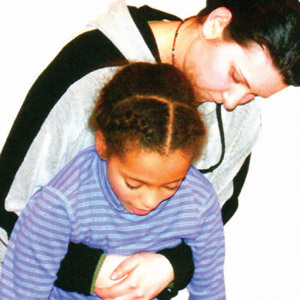Babies under one year old
-
Open the baby's airway by placing one hand on the forehead while gently tilting the head back and lifting the chin. Remove any visible obstructions from the mouth or nose.
-
Place your mouth over the mouth and nose of the infant and blow steadily and firmly into their mouth, checking that their chest rises. Give five initial rescue breaths.
-
Place two fingers in the middle of the chest and press down by one-third of the depth of the chest. After 30 chest compressions at a steady rate (slightly faster than one compression a second), give two rescue breaths.
-
Continue with cycles of 30 chest compressions and two rescue breaths until they begin to recover or emergency help arrives.



